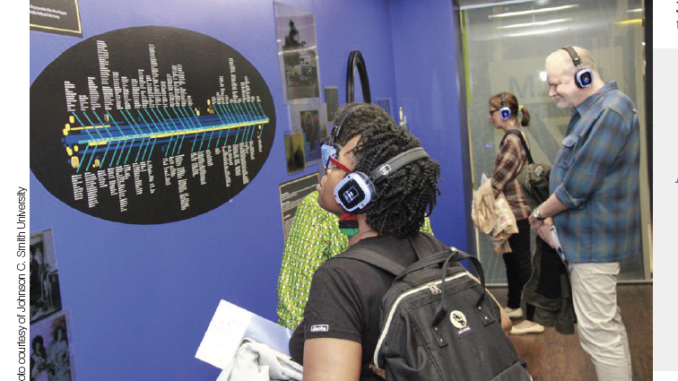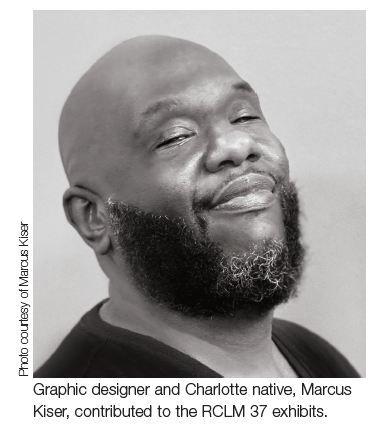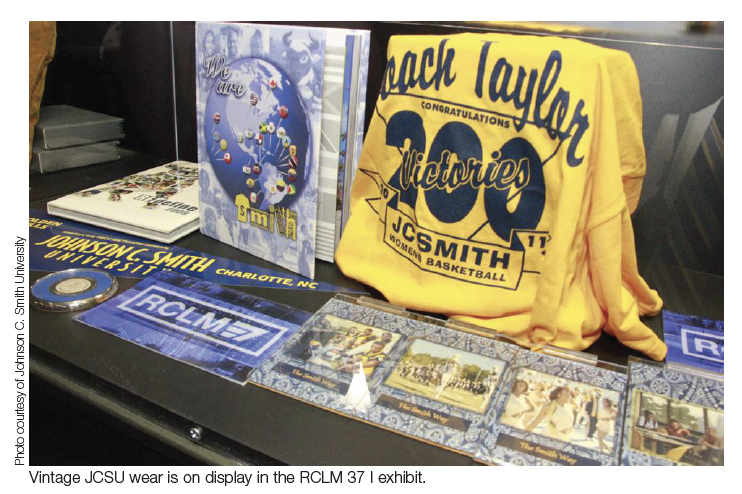
By Sasha Manley
Johnson C. Smith University’s two-part installation highlights the Beatties Ford Road Corridor’s concerns, history and future. Over 60 years ago, a new I-277 expressway ripped through the Beatties Ford Road area off interstate 85 and exit 37, displacing residents, businesses and churches. These challenges are still happening today.
The experimental project, RCLM 37, pronounced “Reclaim 37,” is a call to action recognizing the effects of urban renewal and explaining the need to preserve and “reclaim” the neighborhood. This dedicated work also highlights two black educational advocates and former historic West End residents, Dr. Henry Lawrence McCrorey and Dr. George E. Davis.
“We hope to change the attitudes of individuals on the important role in preserving, sharing, and displaying positive narratives of the Beatties Ford Road Corridor/Biddleville,” said Monika Rhue, Project Director and Director of Library Services and Curation at Johnson C. Smith University (JCSU).
“We would like to give voices to long-time residents and provide a historical perspective to new and incoming residents as this community transforms culturally,” Rhue added.
The exhibits
RCLM37 I
The indoor exhibit first opened in April 2019 and lives in the James B. Duke Memorial Library. It features a documentary that gives voice to current residents dealing with the ongoing changes in the neighborhood. An eight-part display lines the walls with artwork, spirit wear, yearbooks and other artifacts connecting the HBCU to the community.
Judge Shirley Fulton inspired this portion of the exhibit. Fulton played an active role in restoring one of the historic west end neighborhoods, Wesley Heights.
RCLM 37 II
The second phase of the exhibit, RCLM II, sits in the classroom courtyard between the New Science Center and the Jane M. Smith Memorial Church. It features the campus’ first two outdoor sculptures—the Open Book and Beacon of Light Installation. They both display the historical contributions of Dr. McCrorey and Dr. Davis.
McCrorey became JCSU president in 1907. The Open Book display’s his handwritten letter, “The Future of the Negro.” Davis was the First Black Professor at JCSU and the First Black Professor at any southern college in 1886. The Beacon of Light is dedicated to the Biddle Memorial Hall and recognizes the students who built it.
Pillars surround the outdoor display and offer oral history lessons with a QR code scan. There, visitors can watch and listen to slideshows that share the work of McCrorey and Davis.
The team
Many of the contributing artists are from Charlotte. Rhue hired Janelle Dunlap, RCLM’s creative director, through funding. “We wanted to incorporate people that have some relationship with the community, living in the community, and that was very important to us in this project,” Rhue said.

Creatives who worked on the exhibits include:
- Quintel Gwinn, interior designer
- Marcus Kiser, graphic designer
- Kevin Mitchell, videographer
- James Blackmon, musician /soundtrack artist
- Lavonte Hines (FLLS), musician/soundtrack artist
- Stephen Hayes, sculptor
- Willie Griffin, Ph.D., staff historian
- Brandon Lunsford, digital manager and university archivist
There was a heavy presence of black men artists for the project. Their work honors Davis and McCrorey for creating a legacy in the community where they grew up.
With over 13 years of experience, Marcus Kiser was the graphic designer for RCLM I. He’s a Charlotte native that grew up in the West End. His work connects the past to the future with afro-futurism. Looking ahead, he expresses, “It’s very important for people to understand their history, especially us. I don’t want stuff to disappear. I want to preserve culture. I know there needs to be an economic boost, but I also want to make sure the right people benefit.”
Lavonte Hines is also a native resident who created the soundtrack for the QR slideshows in RCLM II. “I got the narratives and library content and listened to it; (asking myself) what screams black excellence,” Hines said. “I just really thought about what music feels nostalgic.”
Looking ahead
More programming is in the works for the exhibit that will continue running throughout 2022. “The community response has been overwhelming, and the next phase is to engage the students in both exhibits,” Rhue said. The RCLM 37 I exhibit, a collaboration between the James B. Duke Memorial Library and the Levine Museum of the New South, was funded by Culture Blocks and the Arts and Sciences Council. The Museum Grants for African American History and Culture (part of the the Institute of Museum and Library Services) funded RCLM 37 II with a $50,000 grant.


